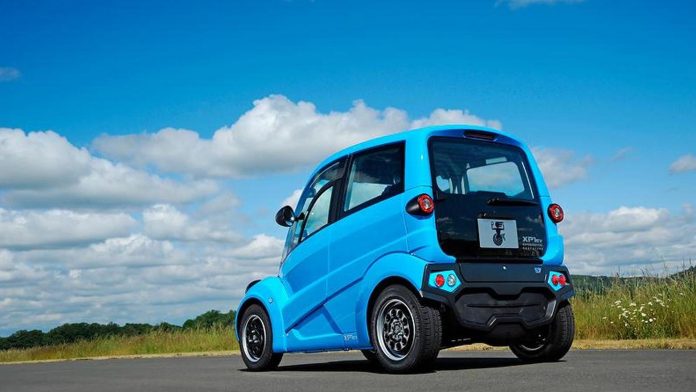It might be strange to see the video above. It’s about the ground effect on the T.50, Gordon Murray’s newest creation. Even though it’s an internal combustion engine car, it is worth checking out. It shows just how much Murray’s motorsport experience can help him create “a revolutionary, lightweight, and highly efficient electric vehicle architecture,” as he announced with part of the £ 300 million investment to expand the Gordon Murray group.
Murray said the T.27 had the same characteristics when he introduced it in June 2011. Although there were some prospects for the urban electric vehicle to reach production, it never did. The new investments can correct this injustice, even if we do not want it to be corrected.
The T.27 was an urban three-seater with a central driving position, similar to what Murray offered on the McLaren F1. It was 2.50 meters long, 1.30 m wide, 1.60 m high and had a wheelbase of 1.78 m. Weighing just 680 kg, it had a 12 kWh battery, with the 160 NEDC cycle Kilometers could be driven.
If you do the calculations, you’ll see that it could reach 8.3 miles per kWh in 2011 – when it was first introduced. Ten years later, no electric car comes anywhere near that, even though the Aptera promises 10 miles per kWh when it hits the production lines. Aptera’s handicap is that it only carries two people, while the T.27 is designed for three of them.

Murray hasn’t revealed much about his future electric car aside from his goals – which are the same for every vehicle the designer creates. The future platform for electric cars would be for “urban passenger cars and delivery vans”.
For Autocar, Murray said the car is “a B-segment vehicle – a small SUV with a compact van derivative to start with”. He also said it would be less than four meters long and “a practical little car instead of a tiny city car”. So if you were also hoping to see a new version of the T.27, forget about it.
The designer also said that GMA (Gordon Murray Automotive) would be dedicated to exclusive cars, no more than 100 units of which will be made. They will also be premium, pushing the boundaries of materials and technologies. All of this suggests that GMA isn’t going to be affordable, which has to be a practical little electric car.
Another piece of the puzzle is that Murray said he was developing an architecture for such a car, not the car itself. Such a platform could be used by a GMA partner responsible for production. It can also be a platform licensed by GMA. We’ve scheduled a conversation with Murray to find out more about his company’s plans for electric vehicles.

